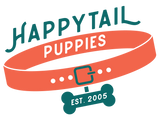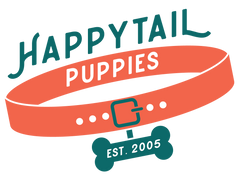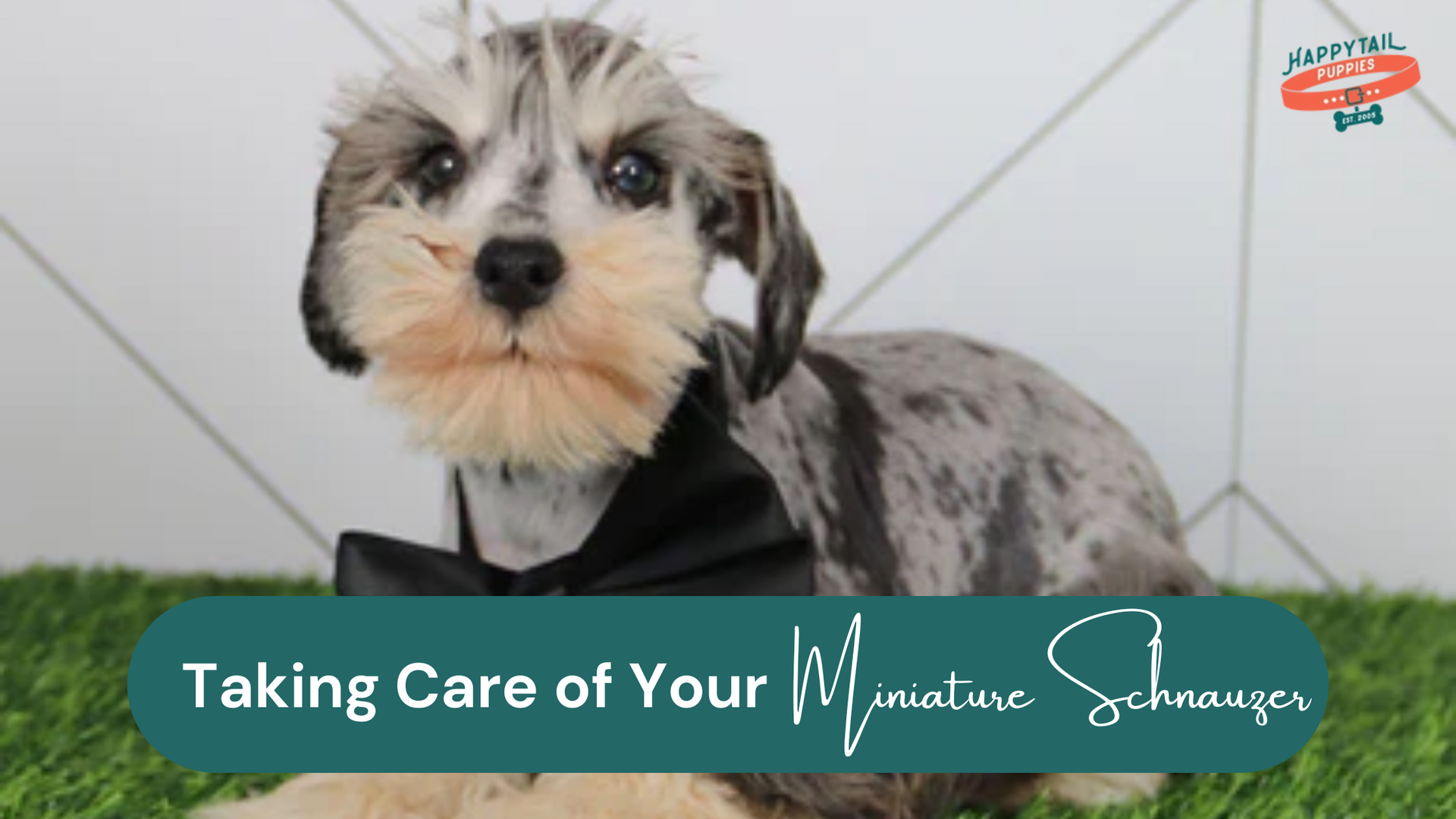A Comprehensive Guide on How to Care for Miniature Schnauzers
Miniature Schnauzers are extremely energetic, charming, and highly intelligent dogs, making them ideal companions for people and families. Their unique eyebrows and beards make these petite pets strong dogs who are easily recognizable and adored by all. When they get appropriate care and attention, Miniature Schnauzers can live happily while having a healthier and more fulfilling life. So, how to choose a dog breed, especially Miniature Schnauzer? In our post today, we are going to discuss the different aspects of caring for this little dog.
Breed History and Characteristics of Miniature Schnauzer
A Mini Schnauzer dog mainly came from Germany during the 19th century and was raised as a farm dog who was used for hunting rodents and as a guard dog. They were bred in their compact version of the Standard Schnauzer blending them with the smaller breeds like Affenpinscher and Poodle. These selective breeding practices resulted in strong dogs with unique aesthetics that are characterized by their bushy eyebrows, strong bodies, and wiry coats. They weigh around 11 to 20 pounds and stand about 12 to 14 inches in height. Their petite sizes, along with their lively demeanor, make them well-suited for urban and rural living environments.
Dealing With Mini Schnauzer’s Personality and Temperament
These small breed dogs, like Poodles, Cocker Spaniels, and others, are popular for their loyalty as well as their affectionate qualities, making them good to be used as pets at home. They are, however, very brave even for their size and mostly have the tendencies of guarding. It also makes them bright and willing to obey, hence very easy to train. Anyway, they can be rather stubborn sometimes, which is why it is crucial to persevere with training and use only joy and rewards whenever possible. They are friendly, which makes them playful all the time, and always happy to play or go on a hunt for something, but they also love to cuddle, especially with their favorite people. With these qualities of temper and energy, combined with affection, they are suitable for active people and families with children.
Nutrition and Feeding Tips
Feed your Miniature Schnauzer a good diet that is nutritionally balanced and geared towards the dog’s overall health. When considering dog food, try to find a brand that contains real meat as the first ingredient and does not contain such things as corn, soy, or wheat as any of the first five ingredients. One should pay attention to the ads and select the substances that contain balanced amounts of proteins, fatty matter, and carbohydrates, as well as necessary vitamins and minerals. Your vet can assist you in choosing the right diet for your dog, taking into account its age, weight, and overall health condition.
Being a toy group, a Mini schnauzer dog is likely to gain weight easily, so their diet must be managed properly, and they must be fed at fixed intervals. In general, adult Miniature Schnauzers should be fed twice a day, with larger meals with pups requiring three to four feeds a day. Again, the portion sizes will vary depending on the age, weight, activity level, and individual dietary requirements. Dogs should have only 10% of their daily allowances in treats, and to avoid having unhealthy dogs, the treats should be taken together with their meals.
Grooming and Coat Care for Mini Schnauzers
Miniature Schnauzers possess the outer coarse hair coat together with the inner downy coat. Grooming is always recommended to avoid cases of matted coat and to ensure the coat remains easy to maintain. Ideally, it should be done for a minimum of two to three times a week with the use of a slicker brush or metal comb. Grooming should be carried out using a dog shampoo and frequency should be between 4 to 6 weeks depending on the need of the dog. Bathing is advised to be done every six to eight weeks so that the Miniature Schnauzer will retain its classy look. This commonly involves hair cutting, mostly on the beards, eyebrows as well as body coat. Bathing and grooming on a regular basis not only maintains the neat appearance of your dog but also controls shedding and eliminates the chances of mat-forming, which is uncomfortable for the dog.
It is necessary to trim the nails from time to time to avoid sharp edges of nails that could be painful and affect the movement of the affected limb. It is recommended that your Miniature Schnauzer get their nails clipped roughly once every three to four weeks by using either a nail clipper or a grinder. Also, oral health is significant in avoiding blows or diseases that affect the gums and teeth. Clean your dog’s teeth with a toothpaste specially formulated for dogs at least three times a week using a toothbrush, and clean teeth chew toys for dogs for oral health.
Exercise and Mental Stimulation
Miniature Schnauzers are energetic dogs that require regular exercise to stay healthy and happy. Aim for at least 30 to 60 minutes of physical activity each day, which can include walks, playtime, and interactive games. These dogs enjoy activities like fetch, tug-of-war, and agility training. Providing ample exercise helps prevent boredom and behavioral issues. Regular physical activity not only keeps your dog fit but also provides an outlet for their energy, reducing the risk of destructive behaviors that can arise from boredom or pent-up energy.
Mental Stimulation and Enrichment
Miniature Schnauzers are indeed quite active dogs and should be taken out for a walk or run from time to time. Make sure that your dog gets at least 30 to 60 minutes of exercise each day; these can be walks, plays, and interactive games. These dogs are fond of toys, balls for fetching, tug-wars, and even training on a small obstacle course. Enough exercises are necessary to avoid boredom and other resulting behavioral problems. Exercise is not Only important to maintain the health of a dog but also to release its energy so that it will not cause much damage by doing some destructive activities due to high energy levels.

Basic Obedience Training
To be able to have these trained miniature schnauzer dogs as well mannered members of the household, it is good to train them from a very tender age. Examples of training that could be conducted include simple obedience training that consists of sit, stay, come, and down. Ensure that you also use positive compulsive tools like giving your dog treats, praising, or engaging them in play. It should also be noted that the question of training concerns consistency and long-term effort. Initial education lets a child build the foundation, and it also allows the eradication of certain behaviors that are not preferred to be built in the child. This method of training enables the owner to make the training sessions fun for the dogs to learn and obey commands.
Housebreaking and Crate Training
Effective housebreaking of your Miniature Schnauzer is a long process that involves a lot of using a lot of time and being as consistent as possible. The dog should be fed and taken out to relieve itself on a schedule: before and after eating, after naps, and so on. Using a crate can be useful in the house training process and also gives the dog a comfortable and secure place. Introduce the crate systematically and always use positive associations when getting the dog into the crate. Crate training is very beneficial in housetraining, but it also gives your dog a safe place to go to if he feels threatened and scared. It can also be used for travel and for dealing with kids and separation anxiety.
Regular Vet Check-ups
Just like you need to go to your doctor for checkups, your Miniature Schnauzer needs to get vaccines, etc. The basic preventative measure you should take is to take your dog to the vet for annual physical check-ups. At these visits, some of the procedures include a physical examination, a parasite check, and updating the vaccinations. Well checks help your vet monitor your dog over time, and then any issues can be caught early and dealt with. This is important, as any diseases that show early signs in your dog should be treated early to increase the dog’s living standard and life expectancy.
Vaccinations and Preventative Care
Vaccines are important for the prevention of various diseases common in dogs that your Miniature Schnauzer is at risk of catching. Pay your veterinarian a visit for a proper vaccination timeline to be administered to the pet; core vaccines include rabies, distemper, and parvovirus. Also, remember to give your dog regular flea, tick, and heartworm treatment to enhance the fight against parasitic disorders. This is why it is advisable to have your dog undergo routine checkups, which minimize the possible complications arising from untreated parasitic infections or diseases affecting the reproductive system of your dog.
Home Safety and Dog-Proofing
Providing your Miniature Schnauzer with a comfortable and safe area is important to improve the quality of their lives. To help avert accidents in your home, pinpoint and limit or safely cover things that are poisonous to your dog, wires, or anything that your dog might ingest. To deworm the spot, make sure you offer a “soft and comfy spot to sleep,” “clean, fresh water to drink,” and a separate place to “eat and rest.” Make sure that your yard is well-fenced, if there is any, to avoid those escapes. Take time and inspect your home often for anything that may harm your dog and change anything that may put your dog in a compromising position. It provides the dog with a favorable ground to maneuver, chase, and or run around in a manner that does not compromise safety or expose it to dangerous items such as poison.
Conclusion
Other important features of the Miniature Schnauzer breed include appropriate diet, overall care, hygiene, exercises, and training requirements. After you have completely understood this, it will be easier to offer your pup a happy and healthy life. At HappyTail Puppies we stay dedicated to breeding well-socialized and healthier Miniature Schnauzer puppies for sale. Our breeding facility follows the best standard of care to ensure that each of our pups gets to make the best start in life!
Frequently Asked Questions
The following are a few frequently asked questions we have answered for you:
How to Keep a Miniature Schnauzer Healthy?
Ensure that you take small portions, especially when you want to avoid gaining more weight. Miniature Schnauzers are more susceptible to diabetes than other breeds, and therefore, their diet should be controlled regularly by the two of you.
Are Schnauzers High Maintenance?
They are rather playful indoors, and your new puppy does not necessarily need a yard. The style of this breed’s fur does not make grooming complicated. They are clean dogs, which means they do not have the doggy smell, and they are coat-shed very little.
Can Mini Schnauzers Be Left Alone?
Despite the breed belonging to the extroverted and intelligent class of dogs, all these great characteristics can, at times, make the Miniature Schnauzer very vulnerable to separation anxiety.
What Is the Lifespan of a Schnauzer?
Despite the breed belonging to the extroverted and intelligent class of dogs, all these great characteristics can, at times, make the Miniature Schnauzer very vulnerable to separation anxiety.
How Do You Know Your Schnauzer Loves You?
Your dog will likely run up and make contact by jumping on you, possibly licking your face, and they will most surely wag their tail. Having them excited and happy to see you is one way that you can be certain they really love and miss you. They seek physical contact. This can be in the form of a head pat, a hug, or the choice move, leaning.
- Miniature Schnauzers


